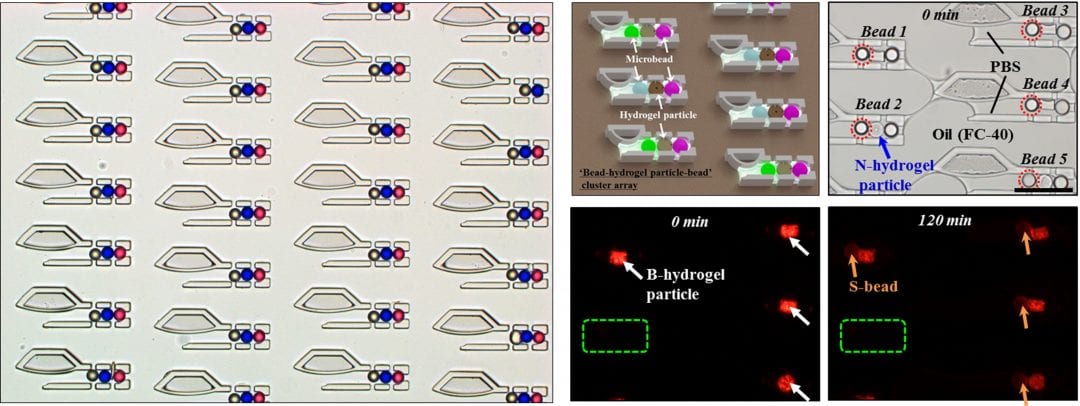Microarrays have been widely used as excellent platforms for high-throughput biological analysis. Existing microarray platforms can typically only perform simple tasks, such as assessment of antibody-antigen reaction.
A variety of microfluidic array platforms have been reported that enable pairing and clustering of different particles, including cells, droplets, drug carriers, and receptor particles. The clustering of engineered particles in numerous reaction chambers and dynamic observation of the interactions taking place in particle clusters has been proposed as a new and effective approach to perform parallel biochemical analysis in a single test. However, these approaches require additional components and fabrication steps that make their platforms more complicated. Additionally, the existing microarray platforms need innovative modifications in order to integrate core functionalities, including high-performance particle clustering with programmable combinations, compact arrangement of numerous reaction chambers, simple device fabrication and operation, application of various particles, and cross-contamination free analysis.
In a recent paper published in Advanced Materials, Joonwon Kim and colleagues at Pohang University of Science and Technology propose a cross-contamination-free, parallel, and dynamic biochemical analysis strategy using a novel microfluidic platform consisting of numerous hydrodynamically tunable pneumatic valves (HTPV), which integrates the core functionalities into a single device. The passive operation of the HTPV using only the hydrodynamic force inherent in microchannel flows facilitates the discrete and high-density arrangement of numerous HTPVs. Moreover, the unique HTPV provide unprecedented particle clustering performance through a simple one-inlet-one-outlet device.
A contamination-free, parallel, and dynamic biochemical analysis strategy using a simple one-inlet-one-outlet microfluidic platform is proposed via the interactions between engineered particles. In the new platform, the particle clusters and the particles interaction in each pico-droplet would carry out individual multi-tasks in parallel, namely “lab-in-a-pico-droplet”. The next challenge is to realize and to operate the world’s smallest laboratory through various combinations of engineered particles in the pico-droplets.

















